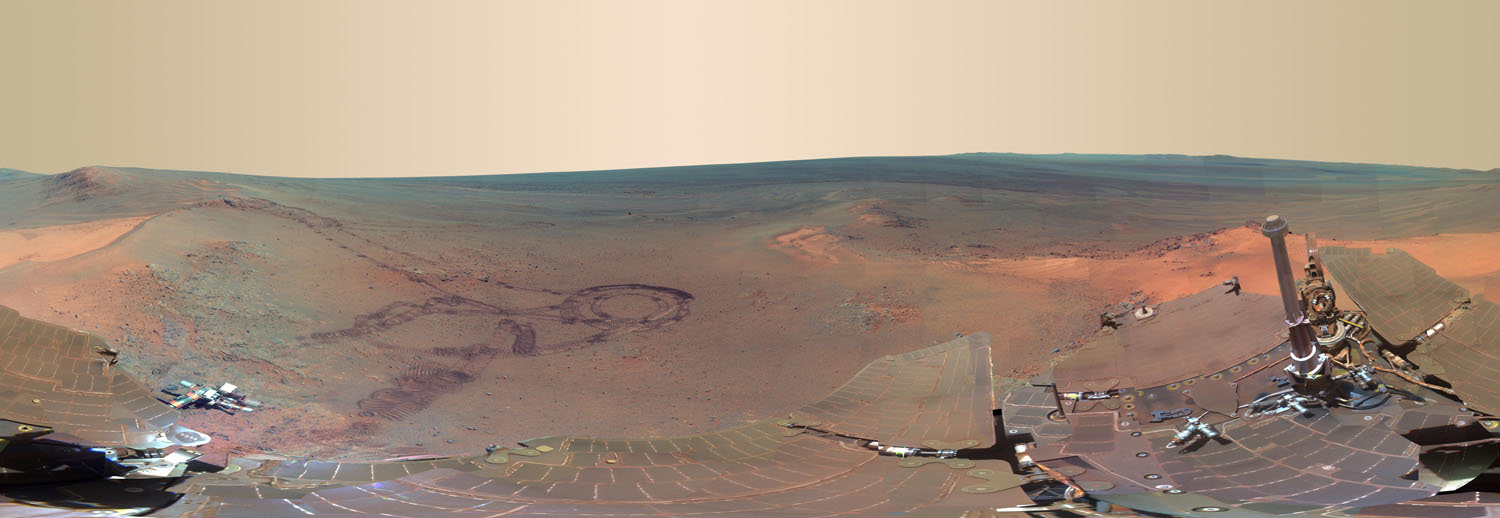Panoramic photography might be defined in broad terms as a process of capturing images which extend beyond the normal view perceived by a photographer's eye. The normal human field of view is limited to about 150 degrees in the horizontal plane and perhaps 70 or 75 degrees in the vertical plane. However human beings are also able to turn their heads to broaden this field of view. True panoramic images are obtained using equipment designed in a comparable fashion.
The panorama below, taken by the robotic NASA spacecraft Opportunity, shows a 360-degree panorama of the surface of the planet. The panorama was assembled using 817 images taken by the panoramic camera over a period of over four months. Changes in lighting are consequently visible in some areas of the panorama. The panorama is presented in what NASA describes as "false colour" to make some differences between materials easier to see.This involves using filters centered on wavelengths of 753 nanometers (near infrared), 535 nanometers (green) and 432 nanometers (violet).

Courtesy of NASA/JPL-Caltech